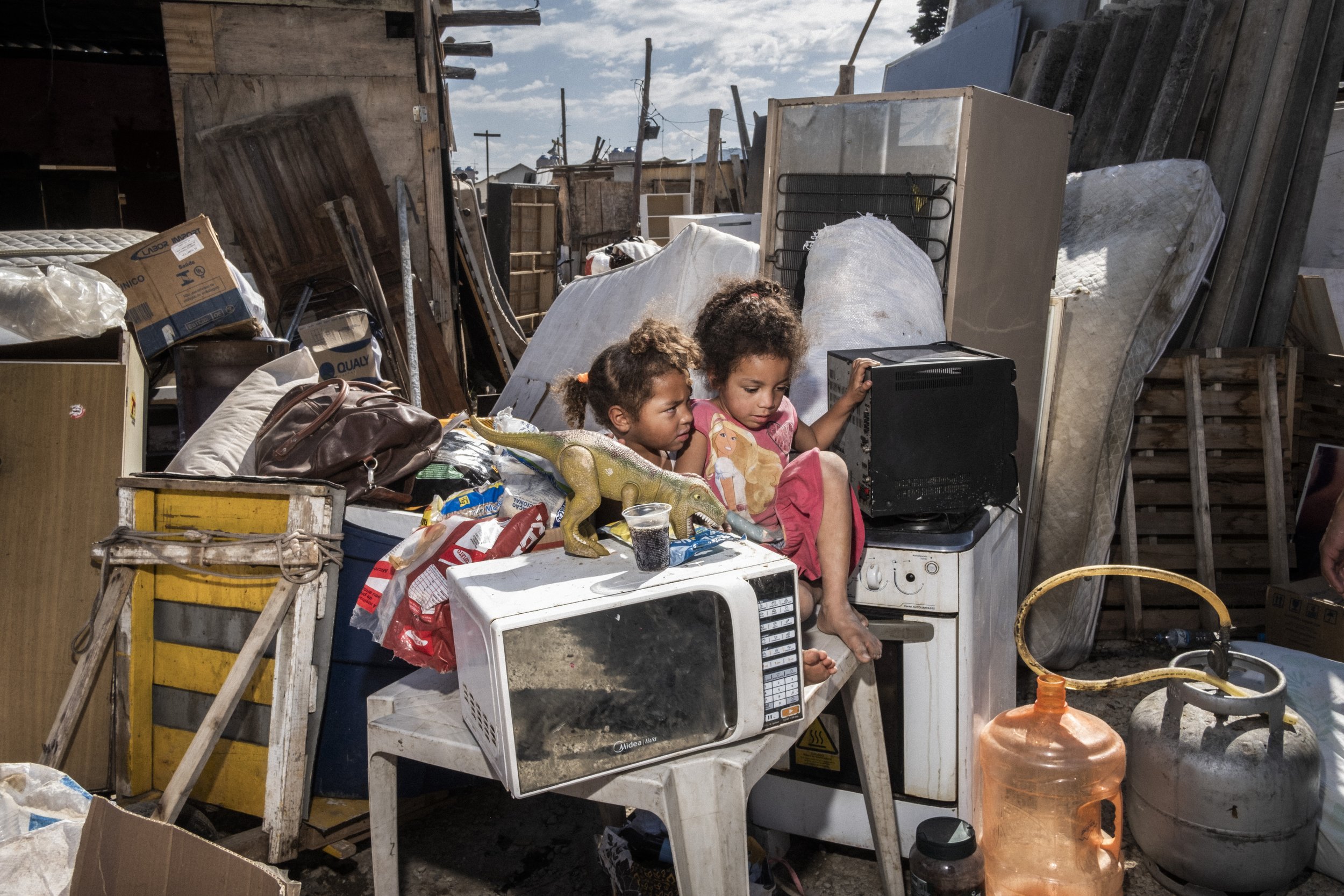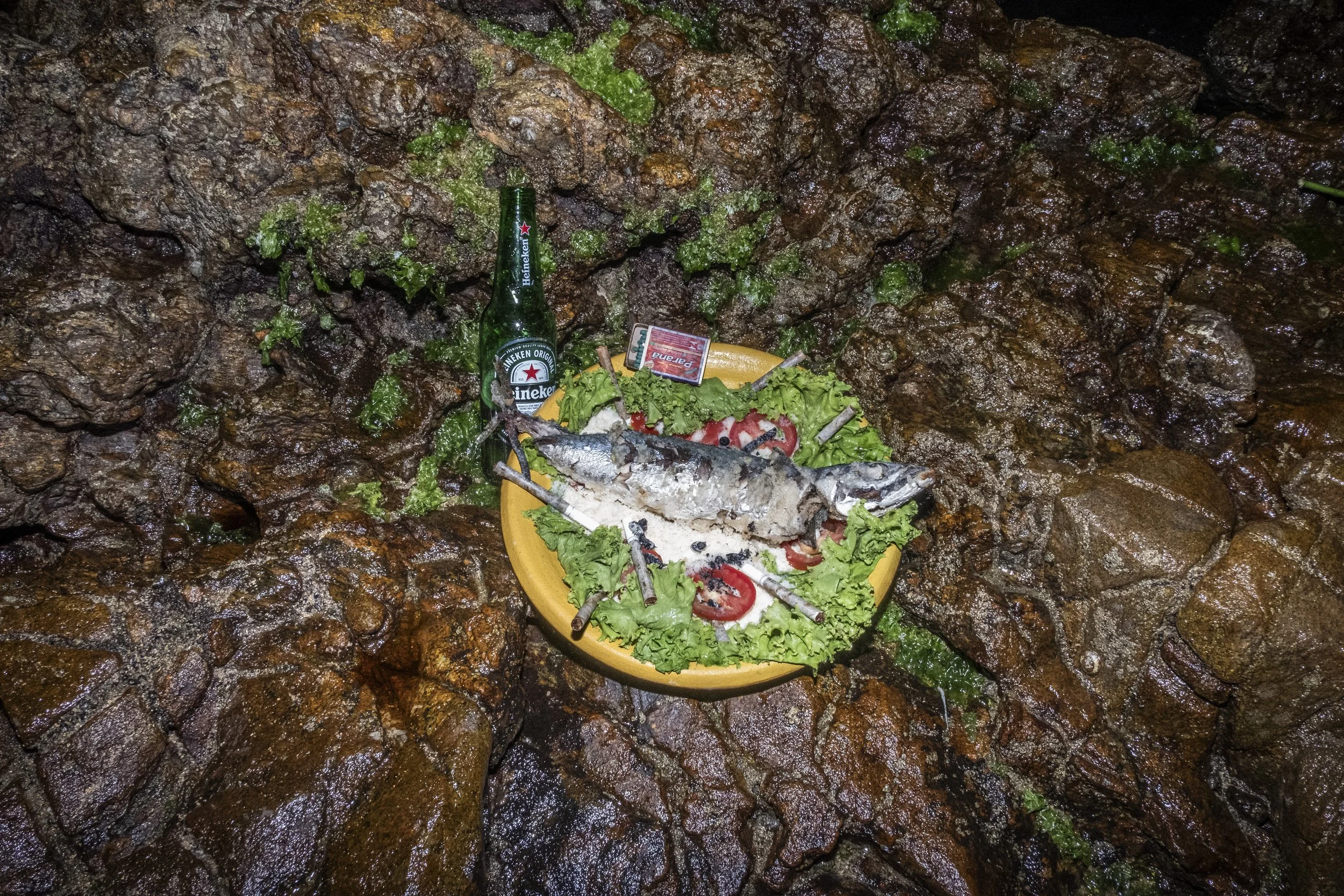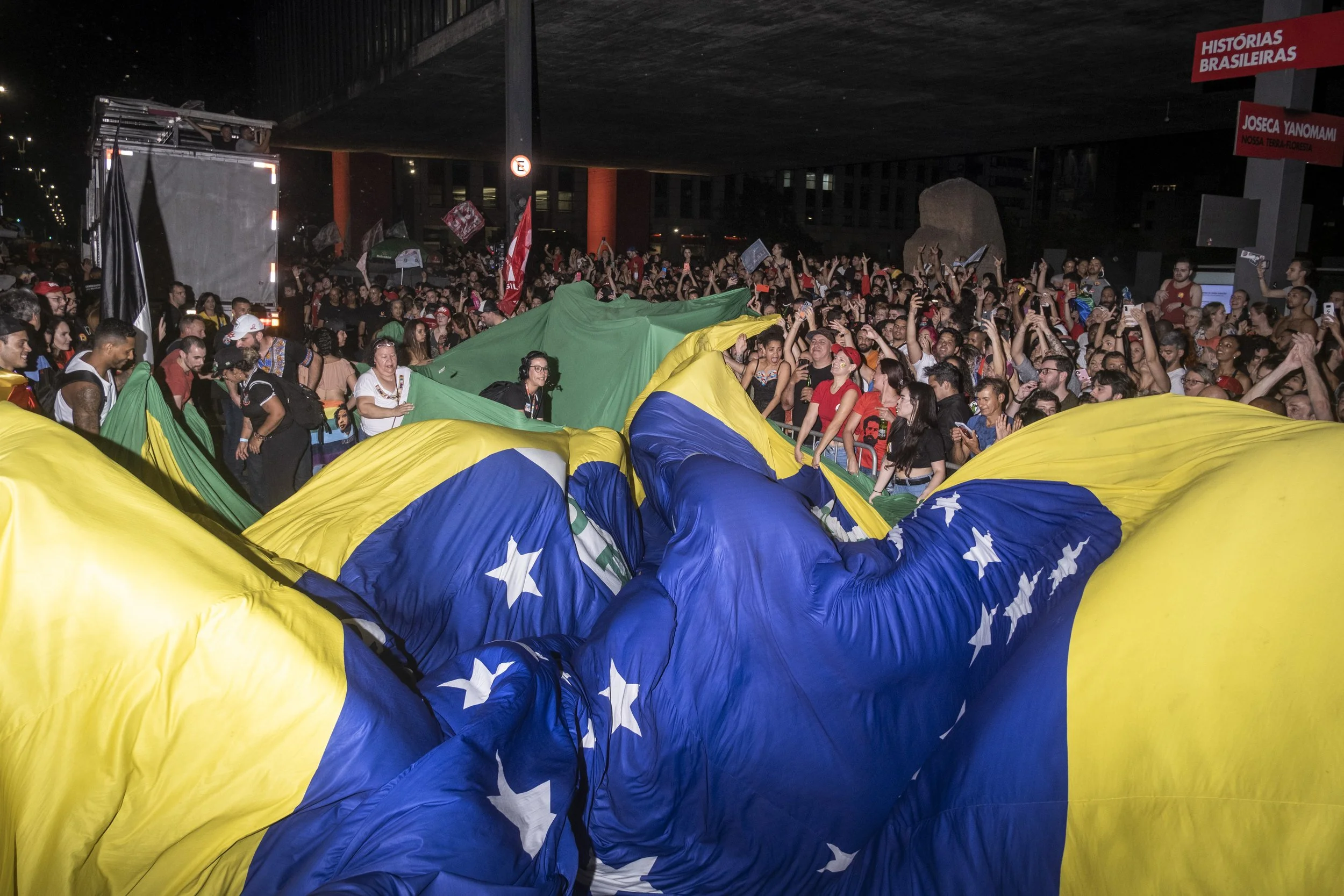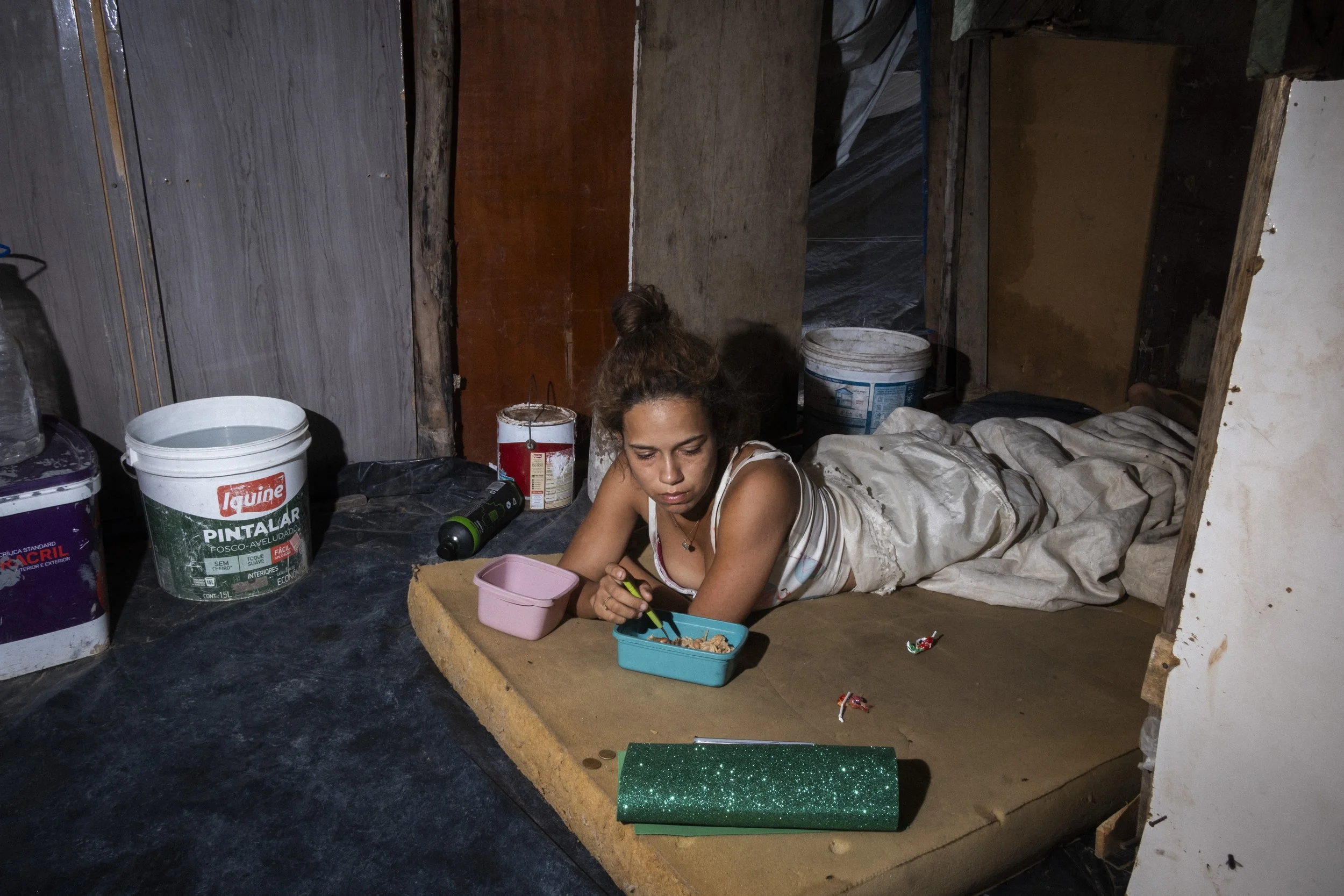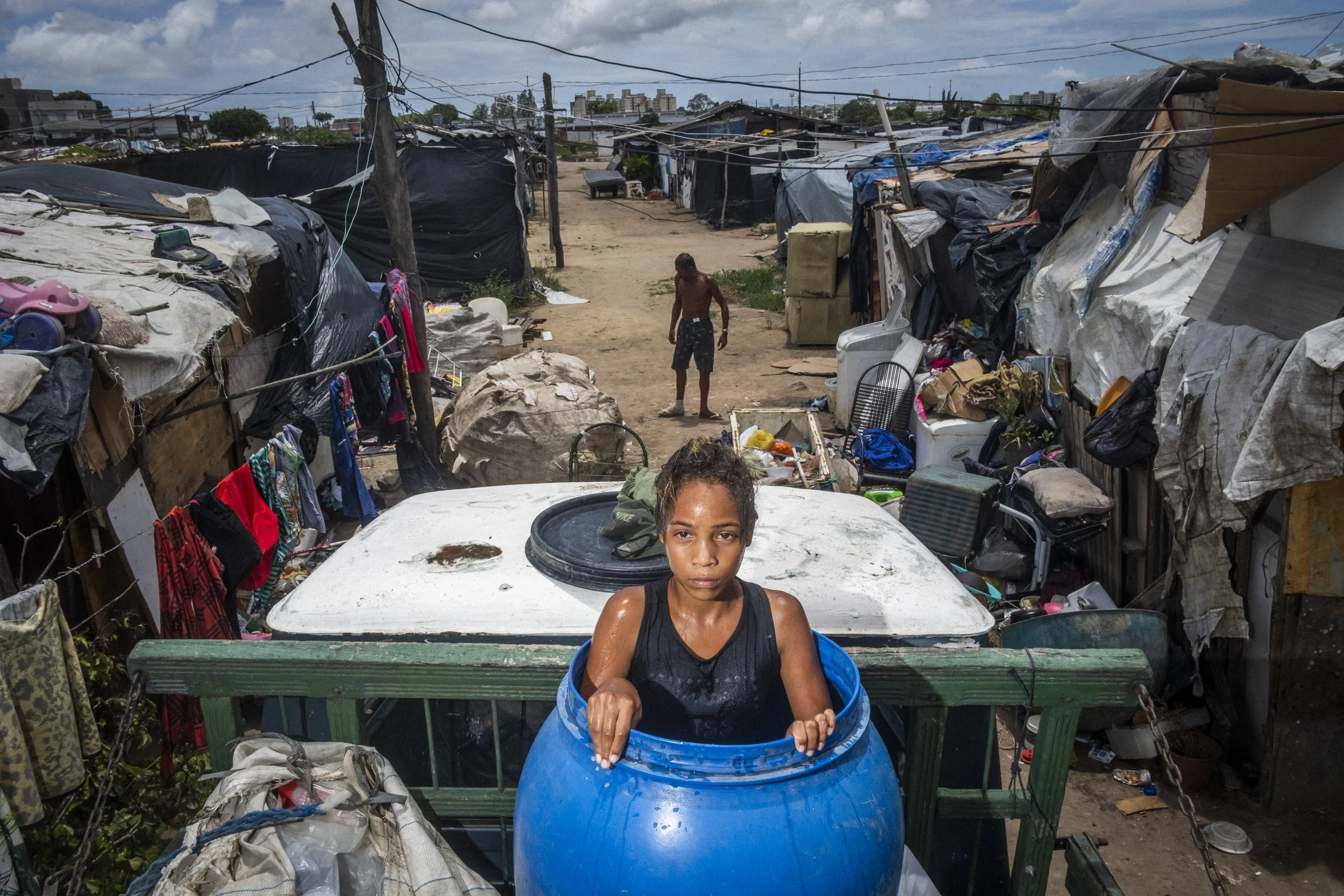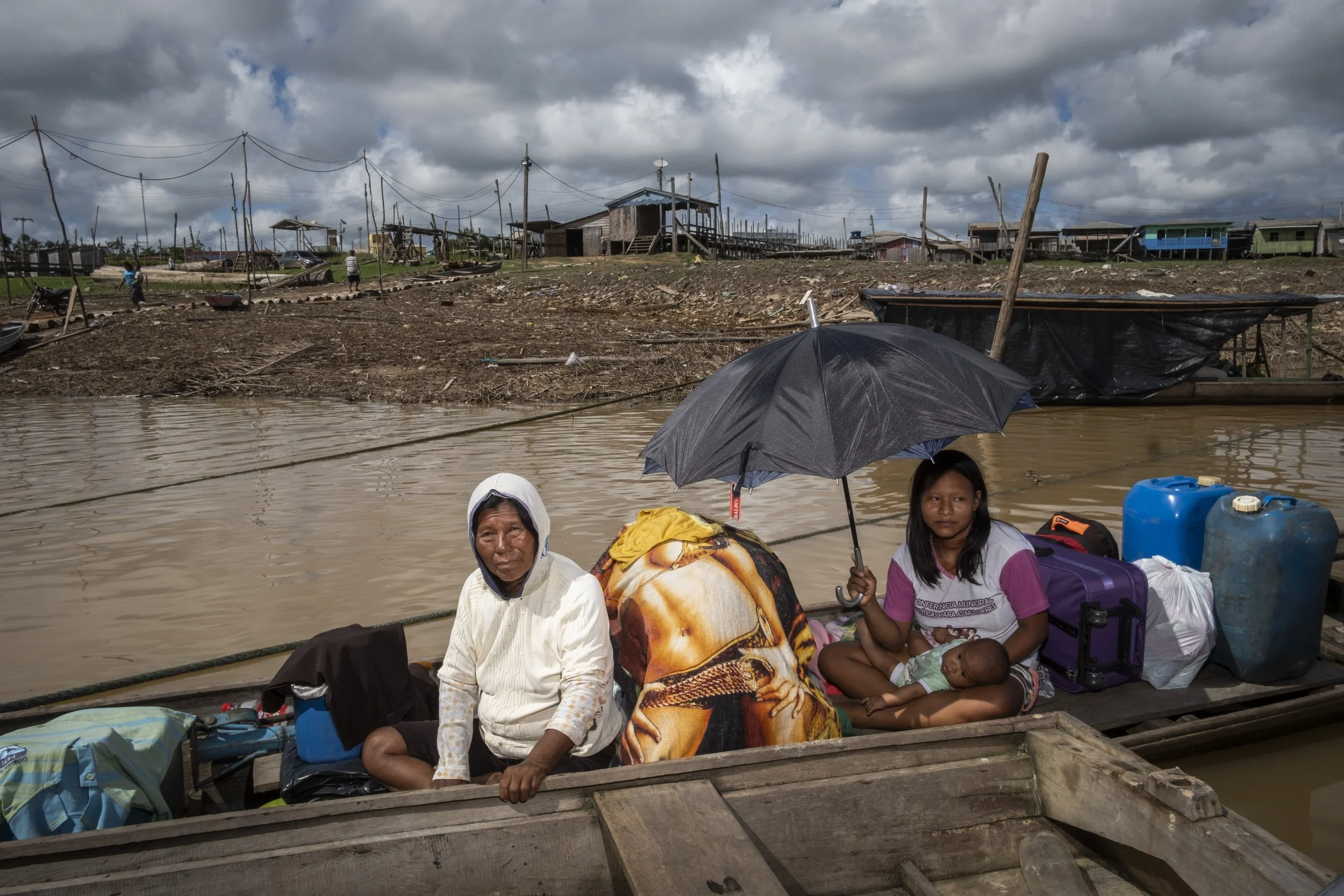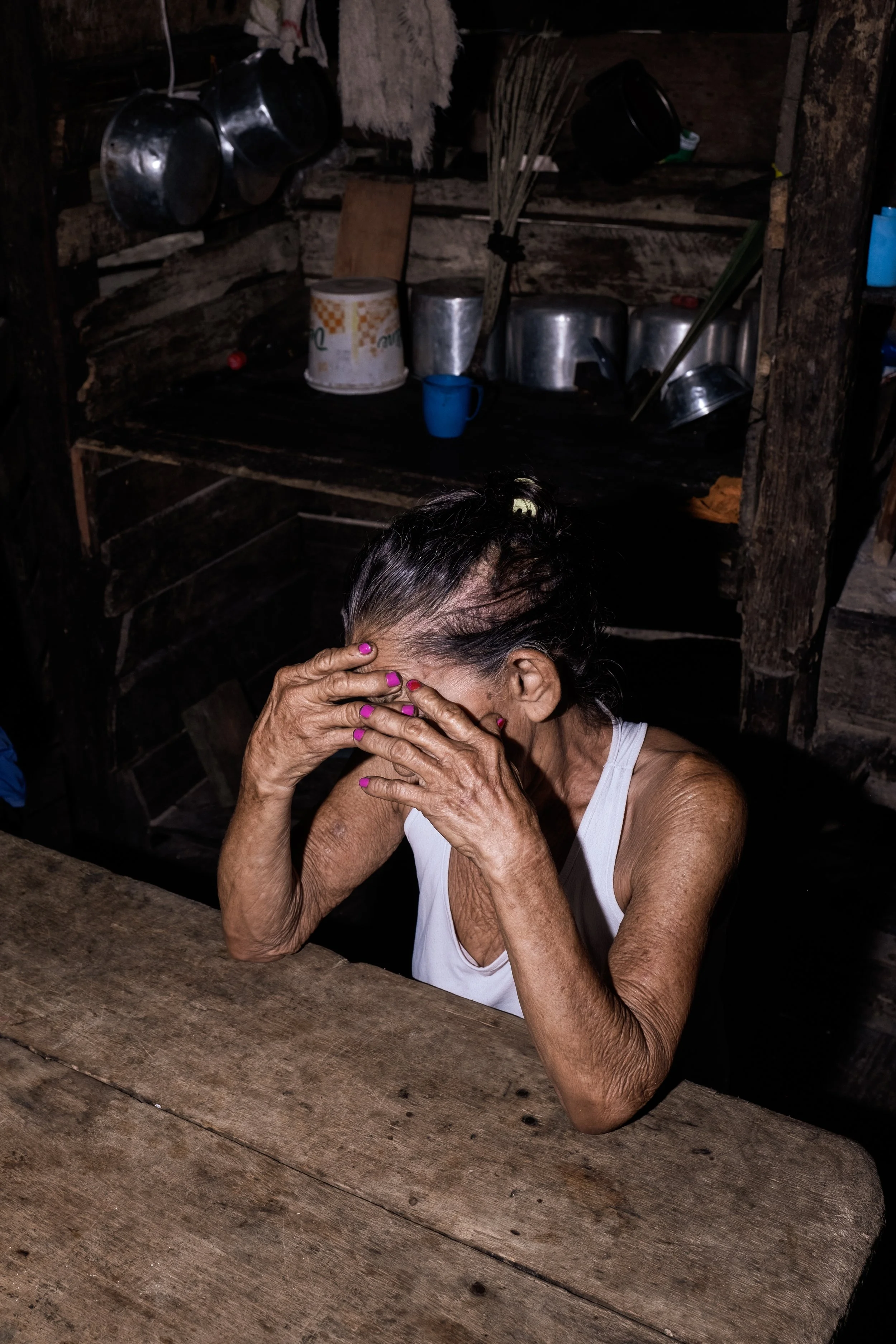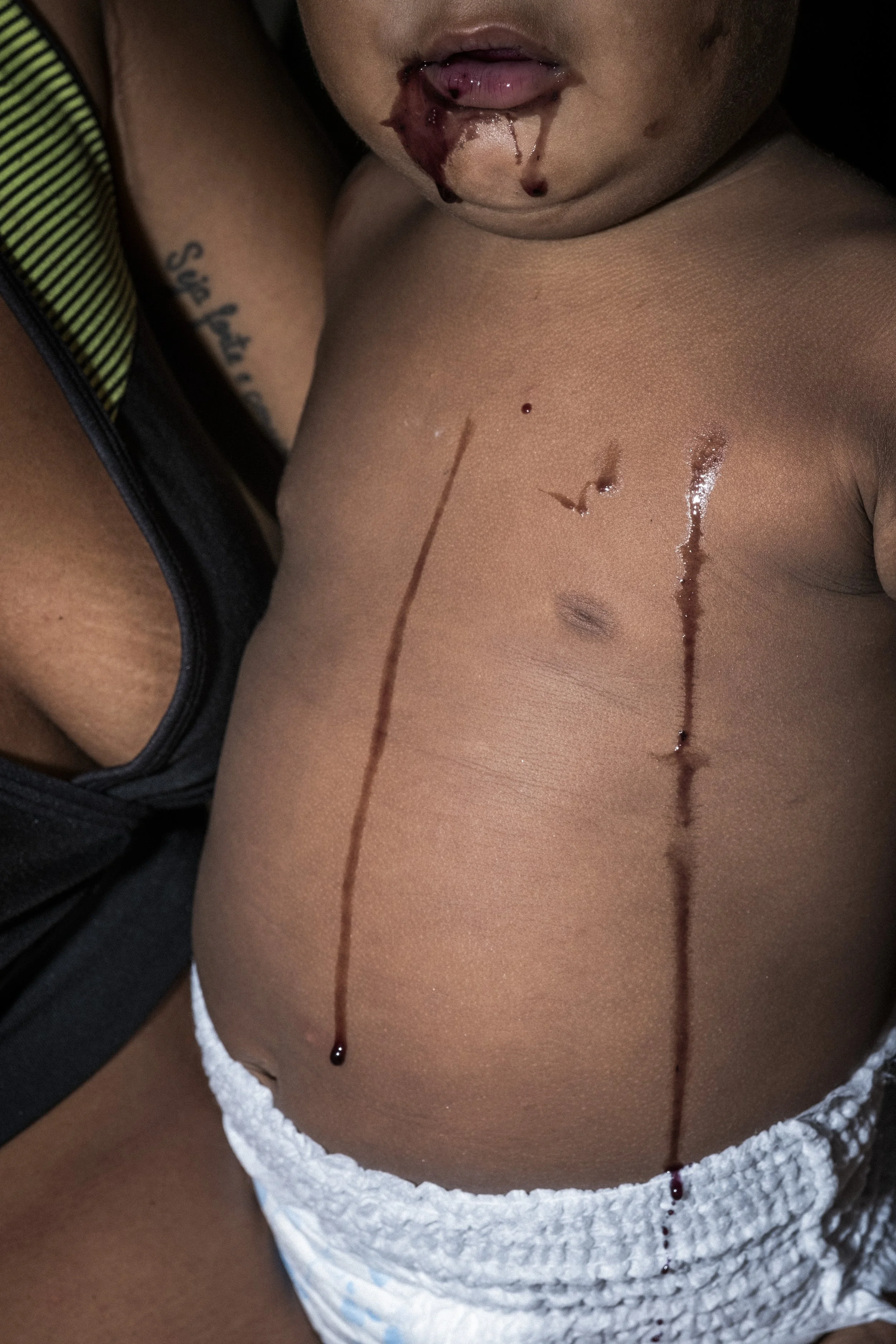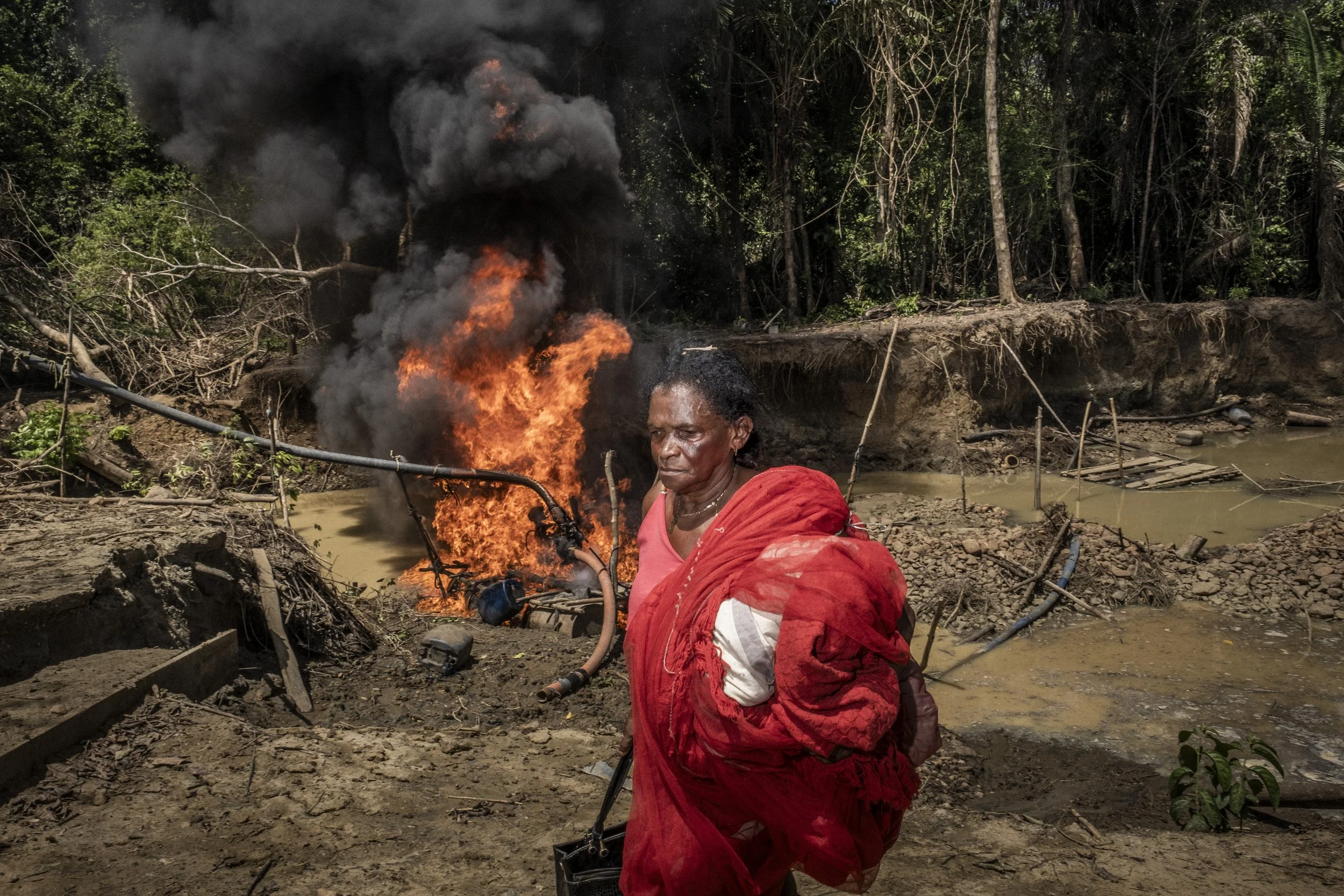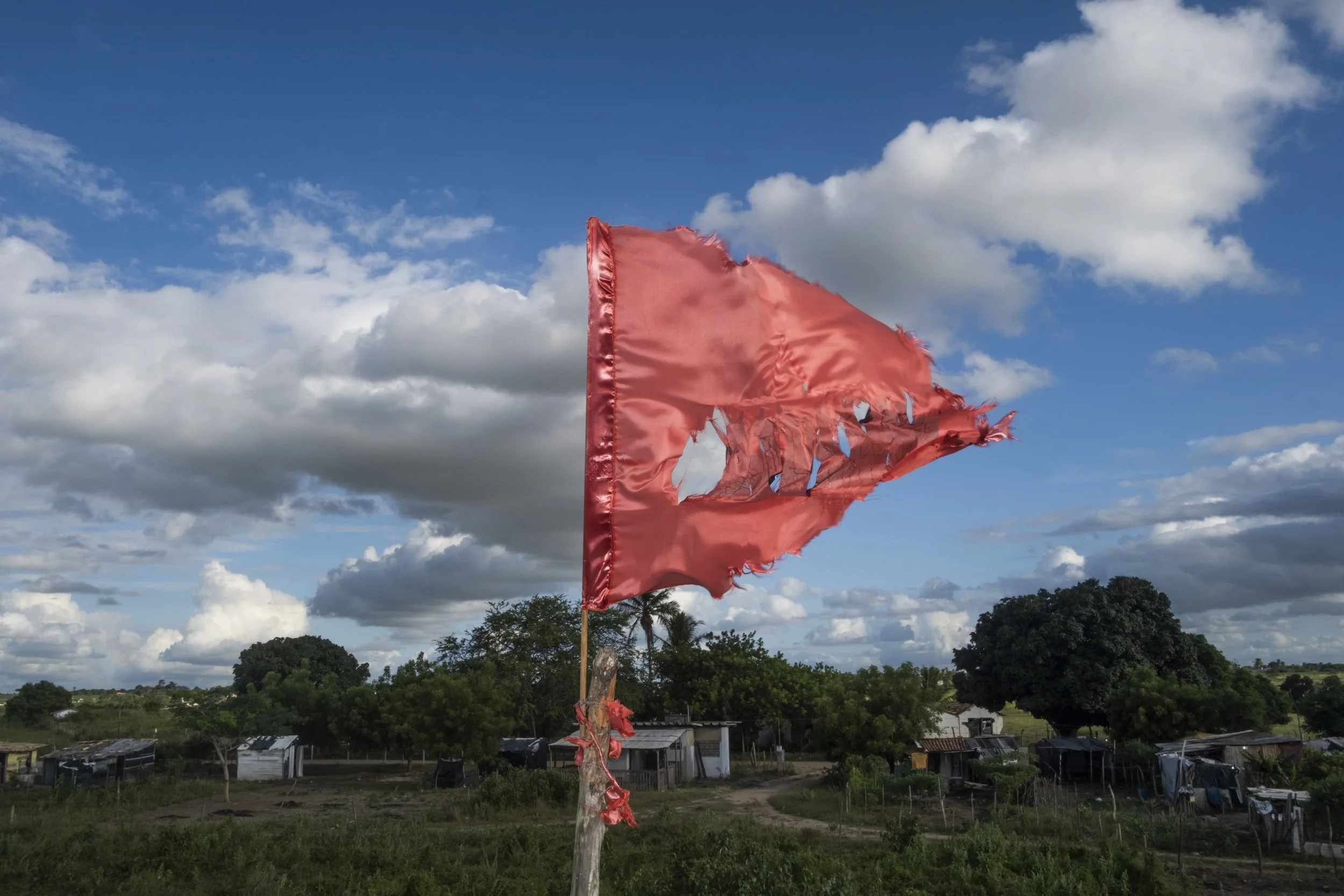FOME
In his book "Sad Tropics," French anthropologist Claude Lévi-Strauss portrays Brazil as a nation still under construction but already in ruins, an idea that has inspired my ongoing photographic project, Fome, chronicling daily life in Brazil for the past five years. My goal has been to scrutinize Brazilian society and its stark disparities. The title "Fome," meaning hunger in Portuguese, nods to Brazil's aspiration to become the "country of the future" while struggling with poverty, hunger, and profound inequalities.
Despite being one of the BRICS nations with rapid growth, Brazil has been hampered by fluctuating trade, flawed policies, and rampant corruption. In fact, it has regressed in the so-called Hunger Map of the United Nations, a global survey on the food situation in each country. According to the report, more than 61 million Brazilians experienced difficulties feeding themselves between 2019 and 2021, and over 15 million went hungry. The pandemic has exacerbated this economic downturn, with Brazil having the world's second-highest COVID-19 death toll.
Fome visually translates the sense of constant decline, despite the buoyant spirit of Brazilian culture. The project explores various themes, including politics, religion, housing, environmental disasters, crime, and the pandemic. Its aim is to capture the daily struggles of Brazilians and their concerns about how outsiders perceive their enormous nation. Fome also reflects on Brazil's growing political polarization, particularly under the leadership of former President Jair Bolsonaro.
Brazilians are known for their charisma and wit, but their sunny facade conceals a deep-seated national despondency. The phrase "Brazil is the country of the future--and always will be" encapsulates the sentiment of stagnation and untapped potential. Brazil's once-enticing allure, centered on its untarnished and breathtaking landscapes, sensuality, and racial harmony, has been shattered by increasing awareness of urban violence, environmental devastation, and alarming levels of child abuse and neglect. Fome provides a glimpse into this intricate and often distressing reality.
2020. Girls play after their home was destroyed during the eviction of over 200 families from the Penha occupation in the northern zone of São Paulo.
2022. As the sun sets on Arpoador beach in Rio de Janeiro, a local vendor sells Brazil's national cocktail, caipirinhas, to beachgoers.
2023. Mango and cashew fruits are displayed on a table in a impoverished riverine community on Marajo Island, near the city of Breves in Pará state. This region ranks among the lowest in terms of socioeconomic development in the country. Many communities here lack access to electricity and face food insecurity, relying on local ingredients such as mango, açaí, and flour for sustenance.
2022. A bust of former President Jair Bolsonaro is displayed inside a glass case made of fired cartridges at the American Shooting Club in Barra da Tijuca. Under his administration (2019-2022), Brazil saw a rise in food insecurity, with the country re-entering the Global Hunger Index in 2021 as facing "serious" hunger levels. Contributing factors included economic decline, cuts to social programs like Bolsa Família, increased deforestation, and a weak response to the COVID-19 pandemic.
2023. A plate with fish, cigarettes, and a beer was left as a gift on the beach of Rio Vermelho in Salvador during the celebrations of Iemanjá, a sea goddess highly revered in the Candomblé and Umbanda religions. The festival is a homage to Iemanjá, where her worshippers gather on the shore to offer gifts and seek her blessings.
2022. Lula's supporters open a Brazilian flag during the celebrations for the presidential victory in the avenida paulista in Sao Paulo.
2023. A boy portrayed on the beach of Rio Vermelho in Salvador during the celebrations of Iemanja, a a sea goddess highly revered in the Candomblé and Umbanda religions. The festival pays homage to Iemanjá, and her worshippers gather on the shore to offer gifts and seek her blessings.
2023. Two homeless friends share a laugh over a meal given by volunteers in downtown São Paulo. The city's records show over 50,000 people living on the streets, a number that keeps rising due to the economic fallout from the pandemic.
2023. Goats tied and placed on a cart at Mercado Modelo in Salvador de Bahia. The market serves as a venue for the sale of animals used in ritual offerings within Candomblé and Umbanda, Afro-Brazilian religious traditions. These offerings are presented as gifts to deities as part of spiritual practices.
2023. Brazilian cowboys, known as vaqueiros, gather to eat flour with jerky before a "pega do boi" competition in the caatinga near São Sebastião do Umbuzeiro, a town in the state of Parnaiba. The caatinga is South America's largest dry forest and one of the world's richest in biodiversity. Cattle rustling in the caatinga is a common practice in Northeastern Brazil, where vaqueiros play a key role in capturing the cattle. These traditions date back to the mid-19th century but are now endangered, much like the caatinga itself, due to disappearing vegetation and changing landscapes in the region.
2021. Garbage and empty bottles that were found in the rural area outside the municipality of Orocó, located in the Sertão region of North-eastern Brazil. The Sertão is a vast hinterland characterized by a scrubby upland forest called caatinga, and is largely based on family farming in non-irrigated conditions. This area is away from the Atlantic coastal regions where the Portuguese first settled in South America in the early sixteenth century.
2024. Cow carcasses found along the road to Guaribas, Piauí. In 2003, during Lula's first administration, the "Zero Hunger" program was launched here to combat hunger in Brazil.
2023. A young woman is having rice and beans for her meal while using her smartphone in the Tereza de Benguela occupied settlement of the Homeless Workers' Movement (MTST) on the outskirts of Maceió, the capital of the state of Alagoas. In this settlement, 204 families live in extreme poverty, with many struggling to afford even one meal a day.
2023. The humble bedroom of a low-income family residing in a peripheral favela community in Recife, the capital of Pernambuco state.
2023. A broken Catholic cross lies in the Parque Vila Nova favela in the city of Duque de Caxias, located in the northern suburbs of Rio de Janeiro. Despite being the largest Catholic country in the world, Brazil is experiencing a growing Evangelical population. In areas like favelas, rural, and isolated communities, churches often serve as the sole outreach to vulnerable populations, providing essential services such as food distribution.
2023. A young girl emerges from a water tank in the Tereza de Benguela occupied settlement of the Homeless Workers' Movement (MTST) on the outskirts of Maceió, the capital of the state of Alagoas. Here, 204 families live in conditions of extreme poverty, with most struggling to afford even one meal a day.
2024. Watermelons with swastikas carved on top are sold at a stall along the main street of Inajá, a city in the state of Pernambuco. The city is known as the "National Watermelon Capital."
2023: In the Jaguapiru village, in the Guarani Kaiowá territory near Dourados (Mato Grosso do Sul), a dog stands by dishes left on a table where women cook donated food for malnourished children. The Guarani Kaiowá face chronic food insecurity due to shrinking lands, isolation, and lack of jobs—conditions worsened by long-standing land disputes. Since losing much of their territory to agribusiness in the 1980s, they’ve struggled to grow food and survive.
2023. Genis, a nine-year-old Kaiowa child, is pictured in an indigenous camp called Ywuverá near Dourados, Mato Grosso do Sul. He hasn't had a meal for a day.
2022. Maria and her daughter, Paumari indigenous people, leave Labrea’s port to return to their village in Amazonas. Once preserved, Labrea has become a center of deforestation, with rates increasing thirteenfold in a decade. The advance of deforestation and fires has forced isolated indigenous communities to seek food in urban centers like Labrea.
2023. Abenilda Fernandes (30) looks exhausted after four days without eating in her hut near the Guarani indigenous community called Serrito in Mato Grosso do Sul. Like many others in the region, Abenilda faces food insecurity due to shrinking territories, isolation, and lack of jobs. She has been hungry for years and tragically lost her nine-year-old daughter to malnutrition five years ago.
2024. Maria Leal de Souza (81) is captured in a moment of distress within her stilt house in the Amazon riverine community of Santa Ana, located in Melgaço, Pará state—the municipality with the lowest socioeconomic development index in Brazil. With no access to electricity, the residents of Santa Ana grapple with hunger on a daily basis. Maria has endured three days without a proper meal, relying solely on a meager amount of flour for sustenance.
2024. Aldemilton (9) and Josè (5) in their stilt house in the riverine community of Santa Ana, Melgaço, the municipality with the lowest socioeconomic development index in Brazil. The community lacks electricity, and its residents, including the two brothers, often go days without proper meals, experiencing hunger.
2020. Maria, a single mother of a child with Down syndrome, resides in a shack within Ocupação Anchieta, a squatted community in southern São Paulo. The inscription on the wall behind her reads, "Jesus looked at me; in truth, He never stopped looking."
2023. During the celebrations of Iemanjá in Salvador, Popocorn and the statue of Virgin Mary left a gift on the beach of Rio Vermelho. The festival honors Iemanjá, a sea goddess highly revered in the Candomblé and Umbanda religions, with worshippers gathering on the shore to offer gifts and seek her blessings.
2020. two children in a shack located inside Anchieta, a squatted favela community in southern Sao Paulo.
2023. Two young boys walk beneath an electrical tower as they make their way to bathe in a nearby river in Breves, a city located on Marajó Island in the Pará state of Brazil. The region suffers from the lowest socioeconomic development index in the country, with numerous communities grappling with food insecurity.
2023. A little child got dirty after eating açaí in a riverside community near the municipality of Breves on Ilha do Marajó, Pará state. This area has one of the worst socioeconomic indicators in Brazil. One of the most productive activities is the harvesting of açaí fruit, which has become a valuable commodity, driving up prices. High global demand is limiting access for local communities, raising concerns among researchers about forest biodiversity
2023. Fishermen offload their catch from boats along the Amazon River in Belém, Pará, Brazil.
2021. Rosilene Maria Ferreira da Silva, 41, shares an emotional moment with her niece, Rayara, 9, reflecting on her past struggles with drug addiction and the challenges of securing food. Rosilene resides in the Futuro Melhor community, Jardim Peri Alto, North Zone.
2023. A woman employed as a cook at an illicit gold mine deep within the Yanomami Indigenous Reserve walks past a water pump set ablaze by Brazil's environmental special forces, GEF, during an operation to expel illegal miners (garimpeiros) and dismantle their equipment. Upon discovery by the GEF in the jungle, the woman confessed that she took the job at the illegal mine due to insufficient wages in the city, struggling to make ends meet.
2023. Amidst a land conflict and struggle for agrarian reform in Brazil, a tattered red flag belonging to the FNL (National Front of Struggle) flutters above a camp of landless peasants on the outskirts of Arapiraca, a city in the rural interior of Alagoas state. Brazil currently holds the unfortunate distinction of having one of the highest concentrations of land ownership, with just 1% of the population owning nearly 50% of the country's arable land.
2024. Aerial view of the 'Land and Freedom' camp ('Terra e Liberdade') near Parauabepas, Pará state, administered by Brazil's Landless Workers Movement (MST). Established in November 2023 following the eviction of the movement from private land owned by a local cattle rancher, which MST had sought to occupy.
2024. A family from Brazil's Landless Workers Movement (MST) living in a makeshift house at the Eduardo Galeano landless peasant camp near Canaã dos Carajás, Pará state.
2020. Residents of the Portelinha favela in Sao Paulo wait in line to receive food from a charitable organization. Despite being one of the world's top agricultural producers and exporters, hunger and food insecurity continue to be a major issue in the country.
2023. A man jokes and shows a chicken before cooking it in the poor favela of Jardim Gramacho in Duque de Caxias, Rio de Janeiro.
2024. A street vendor sells grilled corn cobs along the road near the city of Teofilo Otoni in the state of Minas Gerais.
2023. Inside the shack of a man living in the Tereza de Benguela occupied settlement of the Homeless Workers' Movement (MTST) on the outskirts of Maceió, the capital of the state of Alagoas. Here, 204 families live in conditions of extreme poverty, with most struggling to afford even one meal a day.
2023. Helena Santos Gonzaga (2) lives with her mom, Ludmilla (25), in a small studio in an occupied building in downtown Salvador, Bahia. Ludmilla grew up facing tough times on the streets after leaving her family due to abuse when she was just eight. Now, she's doing everything she can to give Helena a better life, even though they struggle to find enough food. Their home is the first real roof Ludmilla has ever had. Despite the challenges, she's managed to create a cozy space for Helena, decorating it with dolls.
2023. Meat cut in a butcher shop in Monteiro, a town in the interior of the state of Parnaíba.
2023. The carcass of a cow in the desiccated basin of Lake Puraquequara, near Manaus, underscores the profound impact of the 2023 drought. The increasing frequency and severity of droughts in the Amazon have led to a significant decline in water levels, disrupting agricultural activities, exacerbating challenges for local farmers, and highlighting the region’s growing vulnerability to the effects of climate change.
2023. Brazilian cowboy, known as vaqueiro, after a "pega do boi" competition in the caatinga near São Sebastião do Umbuzeiro, a town in the state of Parnaiba. The caatinga is South America's largest dry forest and one of the world's richest in biodiversity.
2023. A fisherman having lime and beer and mortadella for breakfast in Salvador de Bahia.
A young girl hides in a bucket while playing with her brothers in Bananeira, a Quilombola community on Ilha da Maré near Salvador, Bahia. Formed by descendants of enslaved Africans who resisted slavery, the community now faces a new threat: industrial pollution from the nearby Aratu port has contaminated local waters, disrupting traditional fishing and shellfish gathering and threatening their way of life.
A young resident of a peripheral favela community in Recife, the capital of Pernambuco state, who is now paraplegic after being shot during a confrontation between local gangs. The phenomenon of favelization has rapidly increased over the past decade, with the number of favelas in Brazil nearly doubling between 2010 and 2019 (according to IBGE), exacerbating socio-spatial inequalities and marginalizing the population living in these areas.
2023. Ruins of a house destroyed by coastal erosion along Atafona's shoreline, a town north of Rio de Janeiro affected by extreme erosion. Once-thriving homes are now buried in sand, their natural defenses lost due to human intervention. The town faces the impacts of unsustainable development, harming the local economy and fishermen.
2023. Workers unload baskets of açaí berries at night in Belém, Pará, Brazil. Açaí, a staple in Amazonian cuisine, has become a valuable commodity, driving up prices. High demand globally is limiting access for local communities, prompting concern among researchers for forest biodiversity.
2023. Dona Elisabete Pereira Barroso, a 78-year-old resident of Vila da Barca, a poor neighborhood in Belem, the capital of Pará state. She lives in a stilt house where there's no sewage system, and garbage flows through the area. Dona Elisabete has called this place home for fifty years, despite her house catching fire twice. Like many others in her community, she faces challenges with food insecurity.
2023. The destruction left by a landslide after torrential rain in the Barra do Sahy district of São Sebastiao, São Paulo state.
2021. A group of homeless individuals seek refuge together on the streets of São Paulo, Brazil, where the issue of homelessness is a growing problem.
2023. Ricardo Rafael (16) with his brother Silvano Rasta (15) in Passe de Goias.
Empty fishing cages sit in the mangroves of Maré Island in Bahia state, where much of the population relies on shellfish harvesting. This livelihood is under threat from decades of industrial pollution linked to nearby ports, refineries, and chemical plants. Contaminated waters have harmed both the ecosystem and public health—recent studies found heavy metal levels in local children up to four times above WHO limits.
2023. A woman stands in front of the door of her house in a landless peasant camp belonging to the FNL (National Front of Struggle) on the outskirts of Arapiraca, a city in the rural interior of Alagoas state.
2021. Kanamari Indigenous people live in makeshift camps along the Javari River, facing severe poverty. They came to Atalaia do Norte seeking social welfare benefits, but bureaucratic hurdles and high fuel costs trap them in poor conditions without access to clean water, enduring diseases in unsanitary environments.
2022. An employee works at a soybean storage facility in Sinop, Mato Grosso, a region at the heart of Brazil’s agribusiness boom. In 2023, Brazil became the world’s top exporter of soybean bran, reinforcing its global dominance in commodities like soy, beef, and coffee. While large-scale agribusiness drives this growth—and deforestation—family farms still make up 76.8% of rural establishments and play a key role in feeding the country.
2022. A boy plays football on a street in the Leblon housing complex in Anápolis, Goiás. Developed under the administration of Mayor João Gomes, this neighborhood was part of the Minha Casa, Minha Vida (My House, My Life) social housing program, aimed at providing affordable housing for low-income families. Located in Brazil’s Midwest region, Goiás accounts for 3.3% of the national population and contributes 2.7% to the country’s GDP.
